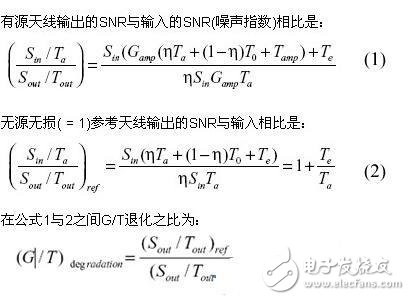The FM radio receiver module is a standard feature in the most modern mobile phones. Short-range FM transmission (Tx) has recently become a popular method. It can transfer audio from a portable MP3 player to a home or car radio. This feature will soon be available for mobile phones.
Laird Technology has developed a built-in antenna RadioAnt for mobile phone FM radio reception, which provides similar performance to the outdated wired headphone antenna through the integration of the radiating device and the joint design preamplifier.
This method has several advantages over traditional passive solutions. One of them is to effectively eliminate the requirement of 50 ohm antenna impedance. This is a very important FM frequency, where the radiation impedance of about 1 meter can be achieved. The inherent impedance interface of the radiation amplifier is not about 50 ohms in the active antenna. The output can be adjusted to any impedance level. For the input properly connected to the receiver, it includes 50 single-ended or 200 differential impedances.
The gain of the preamplifier suppresses the noise of the FM receiver by about 6dB. This is equivalent to using a passive antenna with a high gain of 6dB. Since the dynamic range of the automatic gain control of the standard receiver is limited, the high gain of the active antenna provides a more suitable signal level for the FM receiver. However, the higher gain (because the noise and signal are equally amplified) does not increase the signal-to-noise ratio (SNR) at the RF frequency, which greatly improves the SNR of the down-converted audio frequency. However, the need for an impedance load is eliminated, which severely reduces the gain and increases the antenna noise, and the amplifier does not need to be unconditionally stable.
This type of active antenna does have drawbacks, but it can be dealt with. Specifically, the design and characteristics are more complicated, and the preamp consumes power and PCB area. In addition, active devices must be protected against ESD without degrading sensitivity. The most important thing is that stability and linearity must be achieved without resistive loads, even if the antenna will appear near open or short circuit impedance at the amplifier input.
Active antenna characteristics
The main index beneficial to active antennas is the total gain (antenna + amplifier) ​​normalized by the total output noise temperature G / T (referred to as G ratio T). At present, if the amplifier gain is increased, the output noise will increase, and there is no improvement in G / T. For example, G / T is lossless, and a fully matched short dipole or loop antenna is -22.8 dB / K at room temperature (with directivity of 1.8dBi, 1.8dBi-10log (290K)). The G / T degradation proposed here is related to the concept of a perfectly matched lossless short dipole antenna, which is similar to the concept of noise figure (NF), because the SNR is compared at two different nodes, but at a noise temperature of 290 K The following input (such as the metric defined as NF) does not require a matching source. Generally, since most electrical small antennas have a directivity of 1.8dBi, the gain G is considered to be the "average gain" at all angles, which is consistent with the efficiency of a standard antenna (so, the maximum is 0dB or 100%). Throughout this article, gain is synonymous with efficiency, so it does not include directionality. For example, if G / T drops by 10dB, the system performance is equivalent to a passive antenna's -10dB efficiency (if all antennas are connected to a noiseless receiver).
In addition to the characteristics of the antenna, the degradation value of G / T in practical applications is affected by two external factors: the ambient noise temperature Ta that increases the output noise, and the antenna output noise Tout (and therefore G / T) Receiver noise figure NFre. It has been shown that due to artificial RF noise, the value of Ta at FM frequency is much higher than room temperature T0 (eg 290K or -174 dBm / Hz). The increased noise level means that the effect of noise contribution from active devices and resistors is reduced. Unless a built-in antenna is used, the gain of the radiating device is so low that the physical temperature of the antenna determines the noise temperature. In addition, the high background noise level means that the efficiency requirements of the radiating device can be reduced, and the ideal low noise situation is not reduced as much as G / T. This can be qualitatively understood as that a high-efficiency antenna will receive a greater signal level than a low-efficiency antenna, but it will also receive more noise. Therefore, the SNR at the output of the antenna has not improved significantly.
The second effect is NFrec, which also contributes noise to the output of the antenna, but it can be made insignificant by choosing an extremely high-gain amplifier (Gamp >> NFrec), thereby improving the NF performance of the system compared to using a passive antenna. It should be noted that the two effects of background noise and NFrec are usually inseparable. For example, a high background noise temperature can achieve a receiver-independent noise figure, and vice versa.
If the efficiency of the radiator and the gain Gamp of the amplifier are known (assuming the antenna is at room temperature T0, and "understand" the ambient noise temperature Ta), the active antenna G / T can be calculated by the following formula (where the temperature unit is K) Degradation value:

Stamping Part,Stamping Enclosure,Stamping Steel Enclosure,Stamping Matal Parts
Dongguan Formal Precision Metal Parts Co,. Ltd , https://www.formalmetal.com